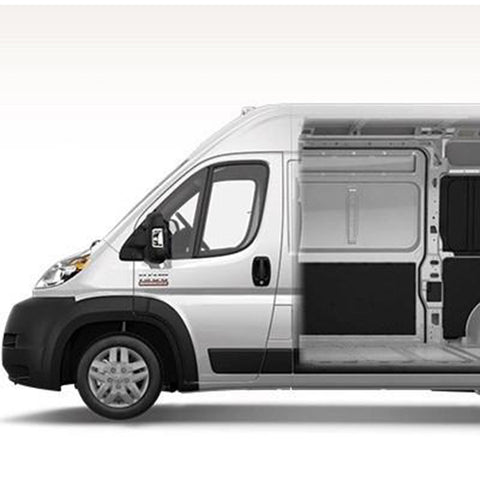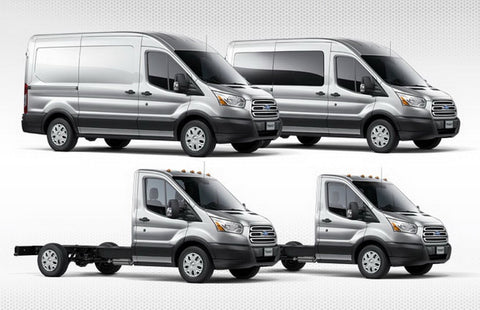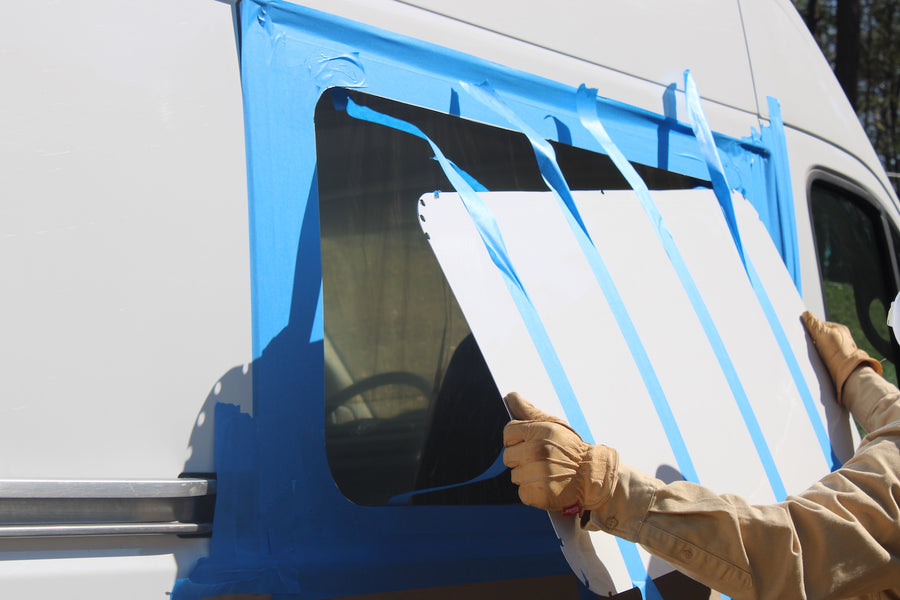
Want to build a camper van? This series of blog posts will help you do just that. In this post, we'll discuss choosing a base van.
In North America, domestic vans like the Chevy Express or Ford E-series vans are pretty tired designs, but they've soldiered on for decades virtually unchanged. Why? For many reasons: cheap gasoline prices, the "chicken tax" which has weakened outside competition since 1963 with a 25% tariff on the import of light trucks, and focus by the big three US automakers on other vehicles, especially pickups and sport utility vehicles (SUVs).
However, in 2001, Mercedes came up with a way around the chicken tax. They manufactured Mercedes Sprinter vans at their factory in Stuttgart, then removed the engine and shipped the engine and van body separately to their facility in Ladson, South Carolina. There the van was re-assembled, making it an "American-made" vehicle and avoiding the tariff. So the Mercedes Sprinter entered the market, and it was a big hit.
Fast-forward to 2014: domestic auto-makers finally realized they needed to refresh their large commercial van models. Why not bring home some of the models already available in the rest of the world? Ford expanded its Kansas City factory -- which had busily produced America's favorite vehicle, the Ford F-150 pickup, for the previous twenty years. There they added the full-sized Ford Transit van to their production lines. Meanwhile Fiat purchased Chrysler that same year, and in Chrysler's Saltillo, Mexico factory started production of the Ram Promaster, a rebadged Fiat Ducato with a Pentastar V6 gas engine as the standard powerplant.
Nowadays the Sprinter, Transit and Promaster are top choices for base vehicle for a camper van in North America. With their choice of wheelbase lengths, multiple roof heights, and multiple engine options, they offer plenty of configurations for the camper van builder:
- Mercedes Sprinter - Available as a cutaway (cab) chassis, cargo van, or a passenger van; with wheelbase lengths of 144", 170" and 170" extended; with regular roof, high roof, and super-high roof; and standard 2.1-liter I4 turbodiesel or optional 3.0-liter V6 turbodiesel engine.
- Ford Transit - Available as a cargo van or passenger van ("wagon"), with wheelbase lengths of 130", 148" and 148" extended, with regular roof, high roof, and super-high roof, and 3.7-liter V6 or 3.5-liter twin-turbo gas engine or 3.2-liter I5 turbodiesel.
- Ram Promaster - Available as a cutaway (cab) chassis, cargo van or passenger van, with wheelbase lengths of 118", 136" and 159", low roof or high roof, and engine choices of standard 3.6-liter V6 gas or 3.0-liter I4 turbodiesel engine.

That said, these are some of the biggest differences between them:
- RWD vs FWD - The Sprinter van is available in AWD, factory 4x4 (or custom 4x4 by Whitefeather), and standard rear-wheel-drive. The Promaster is only available in front-wheel drive. The Transit is RWD, but can be converted after purchase by Quigley or Quadvan into a 4x4 for an additional US $12,000.
- Floor Height - With no drive shaft to the rear, the FWD Promaster's loading floor height is 7” lower than the Sprinter or Transit, an advantage for loading and unloading. Some also say this gives the Promaster much less body roll and a more secure road feel than the higher Transit and Sprinter. Despite appearances, the Promaster rear axle ground clearance is only 1” lower than the Sprinter/Transit rear differential (7.5” vs. 8.5” ground clearance).
- Fuel - The Promaster/Transit gas engines can use regular gasoline or E85, whereas the Promaster/Transit/Sprinter diesel engines require ultra-low-sulfur diesel (ULSD) fuel but can use B5-B20 biodiesel (though a maximum of B5 is recommended, if possible). Biodiesel has extra lubricity compared to ULSD fuel, but frequent use of biodiesel blends over B5 can require extra maintenance.
- Single Rear Wheels vs Dual Rear Wheels - The Sprinter and Transit are both available with dual rear wheels in the longer-wheelbase versions, while the Promaster is not. Dual rear wheels significantly improve high-speed highway driving and crosswind stability with a large, heavily-loaded van but also have downsides such as decreased fuel economy and difficulty getting air into the inside tires.
- Towing - The 170”WB Sprinter 3500 has the highest towing capacity, rated at 7500 lbs, as well as the best rear axle gear ratio for towing (4.18). The Ford Transit XLT has quite a significant rear overhang, which could affect braking and handling, especially if towing.
- Fuel Mileage - The best real-world fuel mileage of the three vans is 23-24 mpg for 2014-2016 Sprinter 2500 vans with the 2.1-liter engine. Ford’s 2015 and 2016 Transits average around 16 mpg for the 3.5-liter engine, 15 mpg for the 3.7-liter engine, and 20 mpg for the diesel. The Pentastar-engined Promaster gets around 15 mpg in current use, and 22 mpg for the Ecodiesel. To see more real-world details on fuel mileage, check out the Fuelly Web site.

All three of the vans -- now fully modern, sophisticated vehicles managed by networked CAN bus systems with sensors in every conceivable part -- achieve excellent performance in a number of ways. That said, all three vans also have their gremlins, including intermittent sensor problems, problems with the exhaust emissions systems on diesel-engined vans, and problems with body rust and corrosion.
So, which van will you choose for your camper van?





